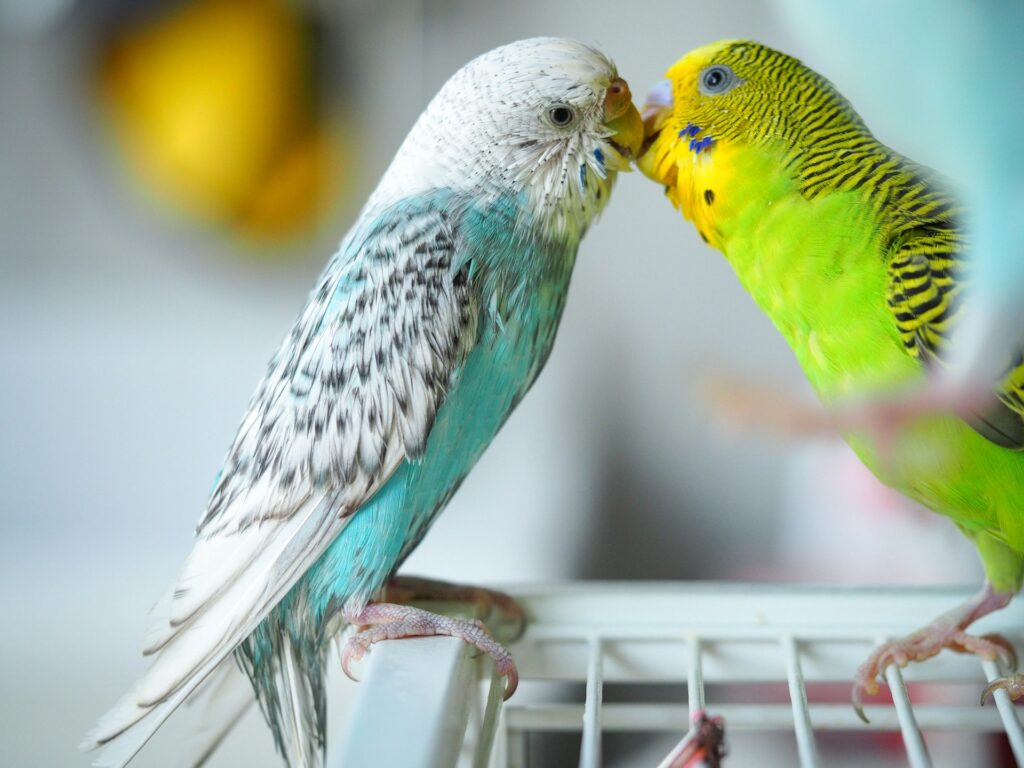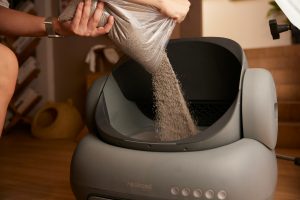
Parakeet Apartment Setup: 15 Brilliant Tips (Quiet, No-Mess, Enrichment)
A dialed-in parakeet apartment setup turns even a studio into a calm, cheerful space. Budgies thrive with a wide, well-placed cage (not just a tall one), good airflow without drafts, natural perches that keep feet healthy, and enrichment that encourages curious, quiet behavior rather than frantic flapping. The key is planning: where the cage sits, how you capture seed hulls, and how you rotate toys so your bird stays engaged while neighbors stay blissfully unaware.
In this guide, we’ll map out fifteen renter-friendly strategies—footprint and bar spacing, light and ventilation, mess control, sound dampening, toy rotations, cleaning cadences, and a tiny go-bag—so your home stays tidy, your bird stays busy, and your deposit stays safe.
1. Choose a Wide Cage with Safe Bar Spacing and Natural Perches
Parakeets are horizontal fliers, so prioritize width over height. Look for a sturdy rectangular cage with budgie-appropriate bar spacing, front access for easy tray changes, and at least two sides with horizontal bars for confident climbing. Outfit the interior with **natural perches of varied diameters** (manzanita, java wood, cork) to support foot health—avoid a cage lined only with uniform dowels. Place food and water slightly apart to encourage short flights and gentle movement throughout the day.
For a quick husbandry refresher (diet basics, grooming, enrichment cues), see PetMD’s Parakeet Care Sheet — then keep reading for the apartment-specific tweaks that make daily life easier.
2. Place for Light & Airflow (Bright, Draft-Free) and Tame Seed Scatter
Set the cage along an interior wall with bright, indirect light—use sheer curtains to soften glare—and ensure gentle air movement past the cage (never blowing directly on your bird). Keep it several feet from kitchens, candles, or aerosols. To control the infamous seed hull blizzard in small spaces, use a deep feeder or a hooded dish, add a clear acrylic “seed skirt,” and place a washable mat under the stand. Position the cage away from shared walls to minimize sound transfer, and keep nighttime calm with a consistent lights-down routine.
Bonus apartment tip: anchor the stand with felt or rubber pads to reduce vibration and protect floors; a narrow console table works as hidden storage for liners, wipes, and toy rotation bins—clutter contained, routine faster.
3. Set a Quiet Routine: Morning Social, Evening Wind-Down, Consistent Sleep
Budgies thrive on predictability—and predictable days make for quieter nights in an apartment. Anchor mornings with a short “hello” session (target-perch or step-up practice, light foraging) and keep late evenings calm and low-stimulation. Dim lights in two steps about 30–60 minutes before bedtime so your bird isn’t startled by a sudden blackout. If you use a cage cover, leave a rear gap for airflow and avoid thick, heat-trapping fabrics. Consistent cues reduce alarm calls and bedtime pacing, which keeps neighbors happy.
Apartment tip: park a small lidded bin and handheld vac under the stand for a 2–3 minute evening reset (seed hulls, tray wipe, water check). A tiny cadence you’ll actually keep beats weekend marathons—and it keeps smells and scatter from building up.
4. Rotate Enrichment Weekly: Natural Perches, Forage Toys, and “Job” Tasks
Variety prevents boredom shrieks. Keep 3–5 items in the cage at once: two natural perches of different diameters, one soft rope perch, a simple foraging cup, and one shreddable toy. Each week, swap only one or two pieces so the layout still feels familiar. Position toys so flight paths aren’t blocked; leave a clear “runway” along the longest side of the cage for short horizontal flights.
For low-cost enrichment, rotate cardboard rolls stuffed with greens, paper “forage confetti,” or DIY balsa blocks. See simple, renter-friendly builds in our DIY toys roundup. A small rotation schedule on your phone (swap day every Sunday) keeps enrichment fresh without adding clutter to your living room.
5. Keep It Lease- and Neighbor-Friendly: Placement, Noise Etiquette, Ventilation
A considerate setup avoids shared-wall hotspots, steers clear of kitchens (fumes, heat, Teflon risks), and respects quiet hours. Place the cage on an interior wall with felt pads under the stand to damp vibration; schedule play and higher-energy training for daytime. Make a habit of quick evening tidies (Tip 3) so morning traffic areas aren’t sprinkled with hulls. For a concise apartment-living checklist—ventilation, neighbor expectations, and policy awareness—see AMLI’s guide to keeping pet birds in apartments (the right way).
If your building echoes, a small white-noise machine outside the cage smooths ambient sounds without blowing air on your bird. Keep fragrances and aerosols out of the bird’s room; good airflow plus a consistent routine do more for “freshness” than scented sprays.
6. Map Perches for Foot Health (No Sandpaper) and Smooth Flight Paths
Perches are more than décor—they’re your budgie’s shoes. Use natural branches of varied diameters (manzanita, java wood, cork) and one soft rope perch to change grip and prevent pressure sores. Avoid sandpaper covers entirely; they irritate skin and don’t “file” nails effectively. Stagger perches so your bird can move side-to-side without bumping toys, dishes, or the cage walls, and keep a clear “runway” along the longest side for short horizontal flights. Reserve one stable, thicker “sleep perch” high and away from vents or drafts.
Place food and water on the opposite side from the sleep perch so your parakeet has a reason to traverse the cage calmly throughout the day. Keep chew toys near—not over—dishes to avoid crumbs in water, and position one grooming perch by the bath dish for confident approaches on bath days.
7. Keep Air Fresh, Dust Down, and Cleaning Fast
Feather dust and seed hulls add up quickly in small homes. Do a 2–3 minute nightly reset: wipe the tray lip, empty hulls from a deep or hooded feeder, swap the paper liner, and top off water. Once a week, do a 15–20 minute deep clean: wash dishes, scrub the tray, rotate perches, and launder the stand mat. If you use an air purifier, choose a simple HEPA unit placed across the room (never blowing directly at the cage) and avoid ionizer/ozone modes. Good airflow + a tiny daily cadence keeps the room smelling neutral without fragrances.
Apartment tip: store liners, wipes, and a handheld vac inside the stand so nothing lives on the floor. For whole-home freshness tactics beyond the cage area, see our guide to pet odor control in apartments.
8. Build a Fold-Away Play Gym and Safe “Window Time” Routine
Out-of-cage time is doable in a studio if it sets up in seconds and packs away cleanly. Create a foldable play gym (T-stand plus a small seagrass mat and two clip-on toys) that lives on a closet hook. For “window time,” close the window, lower sheer curtains to soften reflections, and park the play gym a safe distance from glass so your budgie can watch the world without startling. Keep flight paths clear of ceiling fans, mirrors, and cords; dim overhead lights slightly so perches remain obvious.
Before any free-flight, do a 30-second sweep: cover cables, shut doors to kitchens/bathrooms, and remove scented products from the room. For renter-safe home prep (cord channels, baseboard guards, removable mounts), skim our pet-proof apartment tips. A predictable “gym + window” ritual gives daily enrichment without leaving visual clutter in your living space.
9. Tame Seed Scatter with “Catch Zones” and a 2-Minute Nightly Reset
Seed hulls and feather dust travel—unless you give them a place to land. Create “catch zones”: a deep feeder or hooded dish inside the cage, a clear acrylic seed skirt, and a washable mat that extends a few inches beyond the stand. Keep a lidded bin and handheld vac under the cage so your nightly reset takes two minutes: empty hulls, swipe the tray lip, and refresh the liner. Consistency here keeps mornings clean and your parakeet apartment setup guest-ready.
If the room ever smells stale, improve airflow (fan on low angled past the cage) and lean on whole-home freshness tactics from our apartment odor-control guide.
10. Keep Climate Steady: Bright but Indirect Light, Gentle Airflow, No Drafts
Apartments swing from stuffy to breezy quickly. Park the cage several feet from windows, heaters/AC vents, and exterior doors. Use sheer curtains to soften glare and stabilize temps; if the room gets warm in late afternoon, lower shades an hour earlier and run a small fan on low that moves air past—not into—the cage. A tiny thermometer-hygrometer on the stand helps you spot patterns (heat spikes, nighttime chills) so you can adjust before your budgie gets uncomfortable.
For renter-friendly placement and cable management around the stand (to avoid chew/entangle hazards during out-of-cage time), skim our pet-proof apartment tips.
11. Train for Calm: Target-Perch, Step-Up, and Quiet Handling Cues
A little training goes a long way in small spaces. Start with target-perch (touch beak to a stick, earn a seed) and step-up from inside the cage. Keep sessions short (2–3 minutes), end on a win, and schedule them during your morning social block (Tip 3). Teach a soft “back to perch” cue before bedtime so you’re not chasing a flier at lights-out. Calm routines reduce alarm calls and make deep cleans easier—your hands become predictable, not scary.
Rotate one simple DIY foraging toy each week (paper cup with a few holes, balsa block with greens) to channel energy in a positive direction—see ideas in our DIY toys roundup. A trained, confident budgie is quieter, cleaner, and easier to manage in an apartment.
12. Create a One-Shelf “Nutrition Station” for Clean, Fast Feeding
Keep meals tidy and consistent by centralizing supplies on one shelf under or beside the cage: airtight seed/pellet container (scooper inside), small jars for treats and cuttlebone refills, a labeled bin for chop/greens prep tools, and a microfiber cloth for quick dish wipes. Use a deep or hooded feeder to catch hulls and park a washable mat beneath for easy nightly shake-outs. Rinse water dishes daily (hot water, brief scrub) and rotate two dishes so one dries while the other’s in use—less biofilm, fewer smells.
Apartment tip: prep greens for 2–3 days at a time (wash, spin dry, store with a paper towel in a vented container). Feed in a shallow dish that sits away from the sleep perch so crumbs don’t end up in the bed area. If the room ever smells “birdy,” improve airflow (fan on low past the cage) and pull a couple tactics from our apartment odor-control guide.
13. Train the Carrier and Pack a Tiny “Go-Bag”
Carrier confidence keeps city life low-stress. Leave a lightweight carrier near the cage and target-train your budgie to perch at the entrance, then step inside for a seed reward. Add a folded towel, spare liner, and a small pouch with dish, wipes, and extra seed to a single tote that hangs on a hook by the door. Practice a 60–90 second drill once a month—“step up,” into the carrier, door closed, tote grabbed, lights off—so emergencies or maintenance visits don’t become chaos.
Keep a digital note with vet info and building instructions. For broader home-readiness and renter-safe prep, see our pet emergency preparedness checklist for apartments. A rehearsed routine protects your bird, calms you, and keeps neighbors and management on your side.
14. Add a Bath & Grooming Corner That Doesn’t Splash the Whole Room
A small bath routine keeps feathers sleek and dust down—without soaking your floors. Offer a shallow ceramic dish 2–3 times per week, about perch-height, half-filled with room-temperature water. Place it over a washable mat in a quiet cage corner so your budgie can approach confidently and shake off without hitting walls. Skip sprays and scented products; most birds prefer to self-bathe. Rotate in a rope or cork “groom perch” nearby for gentle foot grip after bathing, and remove the dish after 20–30 minutes so humidity doesn’t build in a small apartment.
Apartment tip: if your bird bathes enthusiastically, tuck a narrow splash guard (clear acrylic strip) between the bath corner and your wall. It mounts with removable tabs and pops off for cleaning—completely lease-friendly.
15. Run a Safety & Quiet Checklist (Doors, Latches, Fans, Windows, Night Mode)
Tiny details keep apartment life calm and incident-free. Add a secondary clip to the main cage door to prevent accidental openings during cleaning. Turn off ceiling fans before out-of-cage time; close windows and use sheers to soften reflections so your budgie doesn’t fly toward glass. Keep the cage a few feet from kitchens and heated cookware; avoid aerosols and strong fragrances in the bird’s room. At night, dim lights in two steps and, if you use a cover, leave a rear gap for airflow—consistent “night mode” cuts alarm calls and neighbor-audible chatter.
Weekly, rotate one perch to change grip patterns, check door screws/bolts, and inspect dishes and the tray for hairline cracks that can rattle. A 60-second safety pass becomes second nature and keeps your parakeet apartment setup whisper-quiet.
Final Thoughts
With a wide, well-placed cage, gentle airflow, smart seed-catch zones, and a simple rotation of perches and toys, you can enjoy a tidy, cheerful home—even in a studio. Keep routines short (2–3 minute nightly reset, a weekly 15–20 minute deep clean), store supplies in the stand so nothing lives on the floor, and reserve high-energy play for daytime. The result is a clean, calm space your budgie loves—and a rental that stays deposit-friendly.
Frequently Asked Questions
What cage size and shape is best for a parakeet in an apartment?
Choose a wide, rectangular cage with budgie-safe bar spacing and front access for quick tray changes. Width matters more than height because parakeets are horizontal fliers. Add varied-diameter natural perches and keep a clear “runway” along the longest side for short flights.
Where should I place the cage for light and airflow?
Along an interior wall with bright, indirect light. Use sheer curtains to soften glare and a small fan on low that moves air past—not into—the cage. Keep several feet from kitchens, heaters/AC vents, candles, and aerosols to protect sensitive airways.
How do I stop seed hulls from getting everywhere?
Combine a deep or hooded feeder, a clear seed skirt, and a washable mat that extends beyond the stand. Do a 2–3 minute nightly reset: empty hulls, wipe the tray lip, refresh the liner. Consistency beats weekend marathons in small spaces.
Do I need to cover the cage at night?
Not always—but a gentle, two-step dim-down plus a breathable cover with a rear airflow gap can help some birds settle. Focus on predictable cues and a quiet room rather than total darkness, especially in apartments with light bleed.
What’s a good cleaning schedule for apartments?
Nightly: 2–3 minutes to empty hulls, wipe tray edges, swap liners, check water. Weekly: 15–20 minutes to wash dishes, scrub the tray, rotate perches, and launder the stand mat. Store supplies in the stand so everything stays off the floor and cleanup stays fast.

Join the Busy Pet Parent Newsletter!
Get easy routines, time-saving tips, and the latest gear reviews—delivered straight to your inbox.
Perfect for busy pet owners, apartment dwellers, and anyone who wants a happy, healthy companion (without the stress).
Exclusive guides & checklists
Product recommendations & deals
No spam—unsubscribe anytime!




